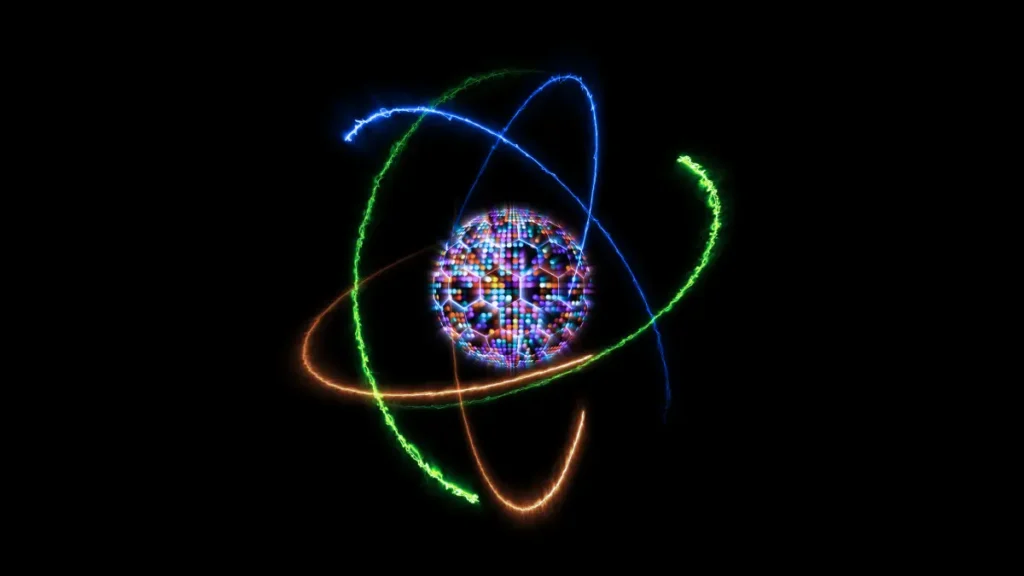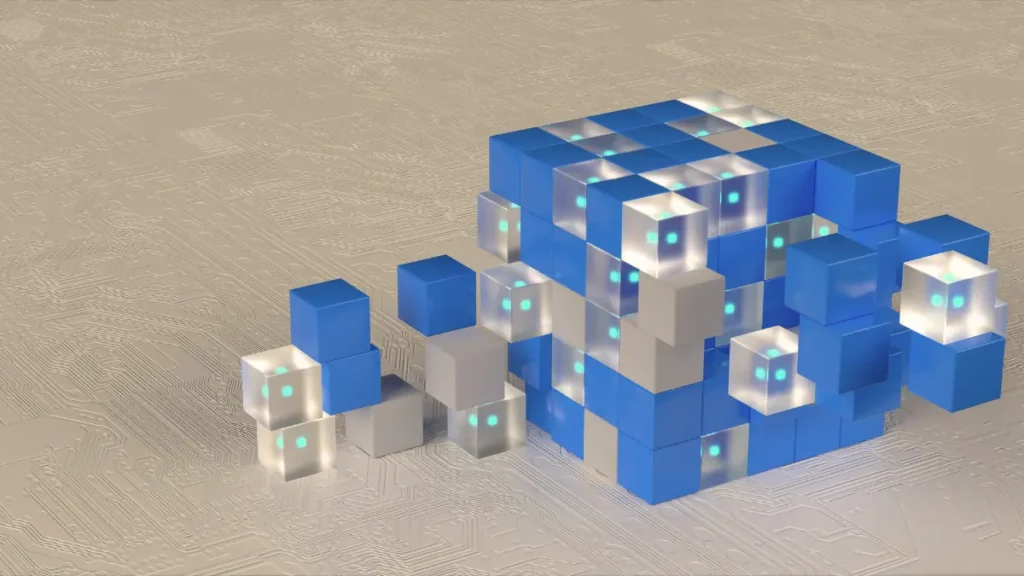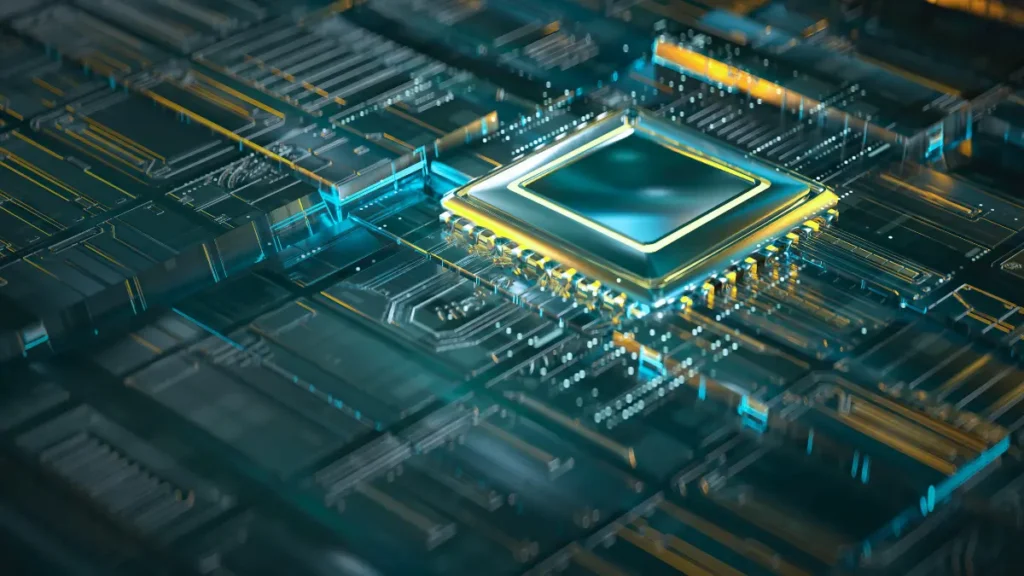Superposition in Quantum Computing: You’ve probably heard about how quantum computers can solve problems that would take normal computers longer than the age of the universe. But what makes quantum computers so powerful? It all comes down to a phenomenon called quantum superposition. This allows quantum bits, or qubits, to represent multiple states simultaneously – essentially being in all possible combinations at once. Superposition is the key that unlocks the exponential speedups promised by quantum computers.
When applied to certain problems like optimization or simulation, it enables quantum algorithms to evaluate many potential solutions in parallel. As you’ll learn, superposition and entanglement let qubits do things that classical bits could never dream of. This quirky quantum effect is incredibly counterintuitive, but it’s real. In this article, we’ll dive into how scientists leverage the magic of superposition to achieve faster-than-classical computations. You’ll come away with an intuitive grasp of this fundamental quantum phenomenon and why it’s so revolutionary.
Superposition in Quantum Computing Explained

What is Superposition?
In quantum mechanics, superposition refers to a strange phenomenon where a quantum particle can exist in multiple states simultaneously. This means that a single quantum particle, like an electron, can spin in both clockwise and counter-clockwise directions at once. Wild, right? This phenomenon is known as quantum superposition and it allows quantum bits, or qubits, in a quantum computer to represent multiple states at the same time.
How Superposition Enables Quantum Computing
In a classical computer, bits can only represent either a 0 or 1 at any given time. Qubits, on the other hand, can represent a 0 and 1 simultaneously thanks to superposition. This allows a quantum computer to perform many calculations in parallel. The ability to represent multiple states at once is what gives quantum computers their immense processing power and potential to solve complex problems that are intractable for classical computers.
Measuring Superposition Collapses the State
Now here’s the catch – superposition is a fragile state. As soon as you measure a qubit to determine its state, it collapses into either a 0 or 1. This is known as quantum decoherence and it limits how long qubits can remain in superposition and be used for calculations. New quantum error correction techniques are being developed to help stabilize and preserve the superposition state so quantum computers can one day achieve their full potential.
While superposition seems bizarre, it’s a fundamental feature of quantum mechanics that opens up exciting new possibilities for computing and beyond. Harnessing the power of superposition may lead to breakthroughs in artificial intelligence, medicine, and other fields that could greatly benefit humanity. The future is quantum!
How Qubits and Superposition Enable Faster Computations
Qubits, or quantum bits, are the basic units of information in a quantum computer. Unlike regular bits that can only be in a state of 0 or 1, qubits can be in a superposition of states, meaning they can act as both 0 and 1 at the same time. This key feature of superposition is what gives quantum computers their power.
When a qubit is in superposition, it enables a quantum computer to perform many calculations in parallel. A two-qubit system can be in a superposition of four states at once (00, 01, 10, 11), allowing it to do four calculations simultaneously. As more qubits are added, the number of parallel calculations grows exponentially. This parallel processing allows quantum computers to solve certain complex problems much faster than classical computers.
For some types of calculations, like optimizations, database searches, and machine learning, the parallel processing enabled by superposition means that adding just a few extra qubits can lead to a huge boost in computational power. Even with today’s noisy, error-prone quantum computers, researchers have demonstrated quantum algorithms that can solve certain problems much faster than any known classical algorithm.
As quantum computers continue to advance, their computational power will grow enormously. 50 high-quality qubits would already surpass the processing power of today’s best supercomputers. This raw computational ability, combined with refined quantum algorithms, could eventually allow quantum computers to solve important problems that are intractable for classical computers, in fields like materials science, drug design, and artificial intelligence. The future of quantum computing looks incredibly exciting!
The Difference Between Qubits and Classical Bits
The key difference between a quantum computer and a classical computer is how they represent information. Classical computers use bits that can have a value of either 0 or 1, representing the two states of a transistor. Qubits, or quantum bits, can be in a superposition of states, meaning they can act as both 0 and 1 at the same time.
A qubit can be visualized as a sphere called the Bloch sphere. While a classical bit can only be at the poles of the sphere, representing 0 or 1, a qubit can be at any point on the sphere. This allows a quantum computer to perform quantum interference between the 0 and 1 states, enabling it to solve complex problems that stump classical computers.
When you run a program on a quantum computer, the qubits in the quantum processor are initialized into a superposition state. The program then performs a series of quantum gates that manipulate the qubits to solve the problem. Finally, the qubits are measured, collapsing the superposition and yielding the result.
The ability for qubits to be in multiple states at once through superposition is what gives quantum computers their power. Some of the most promising applications of quantum computing are for optimization problems, machine learning, and simulating quantum mechanical systems. However, quantum computers are notoriously fragile and difficult to build. Quantum decoherence causes the qubits to lose their quantum properties, limiting how long programs can run before the superposition collapses.
Quantum computing is an exciting new field that could help solve some of humanity’s most complex challenges. While still in its infancy, many tech companies and research institutions are investing heavily in developing more sophisticated and robust quantum computers. The potential of this technology is enormous, but many technical hurdles remain before quantum computers become mainstream.
Real-World Applications of Quantum Computing
Simulating Quantum Systems
With quantum computing, we can simulate the behavior of quantum mechanical systems with high precision. This allows us to study complex quantum phenomena that are intractable for classical computers. For example, quantum computers can simulate molecular interactions, enabling the development of new medicines and materials. They can also help physicists gain a deeper understanding of quantum gravity and high-energy particle physics.
Optimizing Complex Problems
Some types of optimization problems, like scheduling, cryptography and more, are difficult for classical computers but ideal for quantum algorithms. A famous example is the Traveling Salesman problem which aims to find the shortest route visiting each city once. Quantum computers can solve this much faster, with implications for logistics and transportation.
Machine Learning & AI
Quantum computing has significant potential for improving machine learning and AI. Quantum algorithms can speed up training neural networks and other ML models. They can also enhance generative models for applications like image generation, speech synthesis, and more. Some companies are already working on ‘generative quantum AI’ that combines quantum and classical computing.
Cybersecurity
Ironically, quantum computing poses a threat to cybersecurity while also offering a solution. Quantum computers can break current encryption schemes, like RSA, putting sensitive data at risk. However, quantum cryptography, like quantum key distribution, is impervious to attacks from either classical or quantum computers. It generates encryption keys using quantum particles, allowing two parties to communicate secretly.
The future is bright for quantum computing. As the technology continues to advance, we’ll see quantum computers enhance and expand their capabilities across various domains. Superposition and entanglement open up a whole new world of possibilities for computation and beyond. While still in its infancy, quantum computing is poised to become a hugely influential technology in the years and decades to come.
The Future of Quantum Computers and Their Limits
Processing Power Beyond Classical Computers
Quantum computers harness the strange laws of quantum mechanics to solve complex problems that are intractable for classical computers. They tap into a computational space exponentially larger than conventional systems by using quantum bits or “qubits” that can be in a superposition of states. This allows a quantum computer to evaluate many possible solutions in parallel.
Some types of problems that are hard to solve on classical computers, like optimization, machine learning or simulating quantum systems, could be solved much more efficiently with a large-scale quantum computer. This could enable breakthroughs in areas like drug design, artificial intelligence, logistics and more. However, quantum computers today are still in their infancy and face major challenges around scaling, error correction and decoherence before they can achieve their full potential.
The Limits of Quantum Computing
While quantum computing promises a new era of computing power, it also has some inherent limitations. Quantum computers require delicate engineering to isolate qubits from their environment and prevent interference that causes errors. They are also limited by the “No-Cloning Theorem” which states that an unknown quantum state cannot be copied with perfect fidelity. This means quantum computers cannot simply duplicate their best solutions to optimize them further like classical computers can.
Another challenge is that quantum algorithms and programs must be carefully crafted to take advantage of the quantum properties of superposition and entanglement. Not all problems may map well to a quantum computer. There are also open questions around how to characterize the computational complexity of quantum algorithms and whether quantum computers can solve NP-complete problems in polynomial time.
Overall, quantum computing is an exciting but complex new approach to computing that offers both huge opportunities as well as constraints that researchers are working to better understand and address. Significant technical hurdles remain before quantum computers can achieve their full potential and become mainstream, but progress is steady. The future of quantum computing looks very promising if we can unlock its power while navigating its limits.
Key Players in Quantum Computing Research and Development

IBM is a pioneer in quantum computing. They unveiled their first quantum computer prototype, the IBM Q System One, in 2019. IBM currently has over 20 quantum computers available through the cloud for anyone to access and run experiments on via their IBM Quantum Experience platform. Their roadmap includes building a 1,000+ qubit quantum computer within the next decade.
Google is also investing heavily in quantum computing through their Quantum AI Lab. They achieved quantum supremacy in 2019 with their Sycamore quantum processor. Google is focused on developing quantum algorithms and applications in areas like optimization, machine learning and chemistry. They hope to make quantum computing broadly accessible through their cloud services.
Microsoft launched their Quantum Computing Initiative in 2016 and recently announced their Q Sharp programming language. Microsoft is taking an open ecosystem approach to help researchers and developers get started with quantum software development. Their vision is to create a full-stack quantum computing system and make quantum computing available as a service through Azure.
Intel has been researching quantum computing for over 20 years and is focused on superconducting qubit technology. They recently announced their Horse Ridge cryogenic control chip that could speed up development of full-scale quantum computers. Intel’s goal is to reach quantum practicality within the next five years and make quantum computing commercially viable through their Intel Labs and Intel Foundry Services.
Anthropic, D-Wave Systems, and Rigetti Computing are also working on software, hardware and services for quantum computing. Anthropic is focused on AI safety research, while D-Wave and Rigetti are building quantum annealing and gate-model quantum computers respectively.
With major tech companies and startups pushing quantum computing forward, the field is progressing rapidly. Commercial quantum computing services could be available within the next few years, bringing this technology out of the lab and into mainstream use. Superposition and entanglement will soon power real-world applications, enabling new discoveries that were once thought impossible. The future is quantum.
Current Quantum Algorithms and What They Can Do
Factoring Large Numbers
One of the first quantum algorithms discovered was Shor’s algorithm, which can factor large numbers exponentially faster than classical computers. Factoring large numbers is crucial for cybersecurity, as many encryption methods rely on the difficulty of factoring numbers. Quantum computers threaten to break current encryption standards.
Searching Unstructured Data
Grover’s algorithm can search unstructured data, like a phonebook, exponentially faster than classical algorithms. This could allow quantum computers to solve certain search problems that seem nearly impossible for classical computers. However, Grover’s algorithm still requires a quantum computer with thousands of logical qubits to outperform classical supercomputers on large-scale search problems.
Simulating Quantum Systems
Quantum computers can also efficiently simulate other quantum systems, something that pushes the limits of even the most advanced supercomputers. This could allow researchers to gain insights into chemistry, materials science, and other fields. Simulating large quantum systems is one of the most promising applications of quantum computing.
Machine Learning
Some researchers think quantum computers may eventually prove useful for certain machine learning tasks. However, we do not currently have a quantum algorithm that can outperform classical machine learning techniques. Developing quantum machine learning algorithms is an active area of research.
While the potential of quantum computing is promising, we still need more advanced quantum computers with more stable and connected qubits to realize many of the envisioned applications. However, research in quantum algorithms and other areas of quantum information continues to progress rapidly. Within the next decade, we may achieve quantum supremacy and have quantum computers that can outperform classical supercomputers on certain specialized tasks. Overall, quantum computing remains an exciting field to watch as it continues to develop.
When Will We Have Fully Functional Quantum Computers?
Quantum computers are machines that perform computations using the strange rules of quantum mechanics. While classical computers process information in bits, quantum computers use quantum bits or qubits that can be in a superposition of states. This allows a quantum computer to perform many calculations in parallel.
Theoretically, quantum computers could solve certain problems much faster than classical computers. However, building a practical quantum computer is an engineering challenge. Quantum systems are fragile, and quantum coherence needs to be maintained to perform calculations.
Some companies are making progress, though. Google recently demonstrated quantum supremacy by solving a problem that would take a classical supercomputer 10,000 years to solve in just 200 seconds. IBM and Rigetti also offer cloud-based access to prototype quantum computers.
Still, we are likely many years away from having general-purpose quantum computers that can solve practical problems. Researchers need to continue improving qubit quality and stability, reduce interference from the environment, and develop quantum algorithms that can solve useful problems.
A fully functional quantum computer with 50 to 100 qubits may be able to solve certain optimization and machine learning problems. This could happen in the next 5 to 10 years. For more complex applications like molecular modeling or codebreaking, we will probably need at least 500 to 1,000 qubits. Most experts estimate this is 10 to 15 years away.
So while quantum computing is an exciting field making rapid progress, we still have a long way to go before quantum computers start tackling real-world problems. But when fully-functional quantum computers do arrive, they have the potential to revolutionize fields like materials science, drug discovery, and artificial intelligence. The future is quantum!

Superposition in Quantum Computing FAQs
Quantum computing utilizes the quantum mechanical phenomenon of superposition to perform computations that would be impossible for classical computers. In the superposition state, a quantum particle can exist in multiple states at once, allowing a quantum bit or “qubit” to represent both 0 and 1 simultaneously. This enables a quantum computer to perform a massive number of calculations in parallel.
How does superposition work in quantum computing? In classical computing, a bit can have either the value 0 or 1. In quantum computing, a qubit can be in a superposition of both 0 and 1 at the same time. This allows a qubit to represent far more information than a classical bit. As the number of qubits increases, the amount of information they can represent together grows exponentially. This enables quantum computers to solve complex problems that would take classical computers an impractical amount of time to solve.
What are the benefits of superposition? The power of superposition gives quantum computers a huge advantage over classical computers for certain types of computations. Some of the applications that could benefit from quantum computing include:
•Optimization problems: Finding the best solution among many options. This could help with logistics planning or financial portfolio optimization.
•Machine learning: Quantum computers could help train machine learning models more efficiently. This could accelerate progress in fields like computer vision, natural language processing, and more.
•Molecular modeling: Simulating the properties and interactions of molecules is important for developing new drugs and materials. Quantum computers are well suited for these types of simulations.
•Codebreaking: The ability to try many possibilities at once makes quantum computers good at solving hard cryptography problems. This could put current encryption methods at risk but also enable new quantum-resistant encryption.
•Search: Grover’s algorithm enables quantum computers to search an unsorted database in √N time, whereas classical computers require N time. This could make search faster and more efficient.
While still in its infancy, quantum computing promises to transform many areas of science and technology. The strange ability of qubits to exist in superposition gives quantum computers a power far beyond classical computing. If harnessed, this power could help solve some of the world’s most complex and important problems.
Conclusion
And that’s the gist of it, folks. Superposition is truly the key that unlocks quantum computing’s potential to solve problems faster than classical computers. When particles can be in multiple states at once, the number of calculations skyrockets exponentially. It’s some next-level sci-fi stuff made real. So while you and I are still stuck with our clunky laptops, the quantum future is bright.
Researchers are hard at work on the hardware and software to harness the power of superposition. One day, you’ll be quantum computing on your phone! Wild, right? But until then, we can dream of a world where traffic jams are optimized, diseases are instantly cured, and batteries never die. Superposition makes it all possible. Quantum mechanics for the win!



